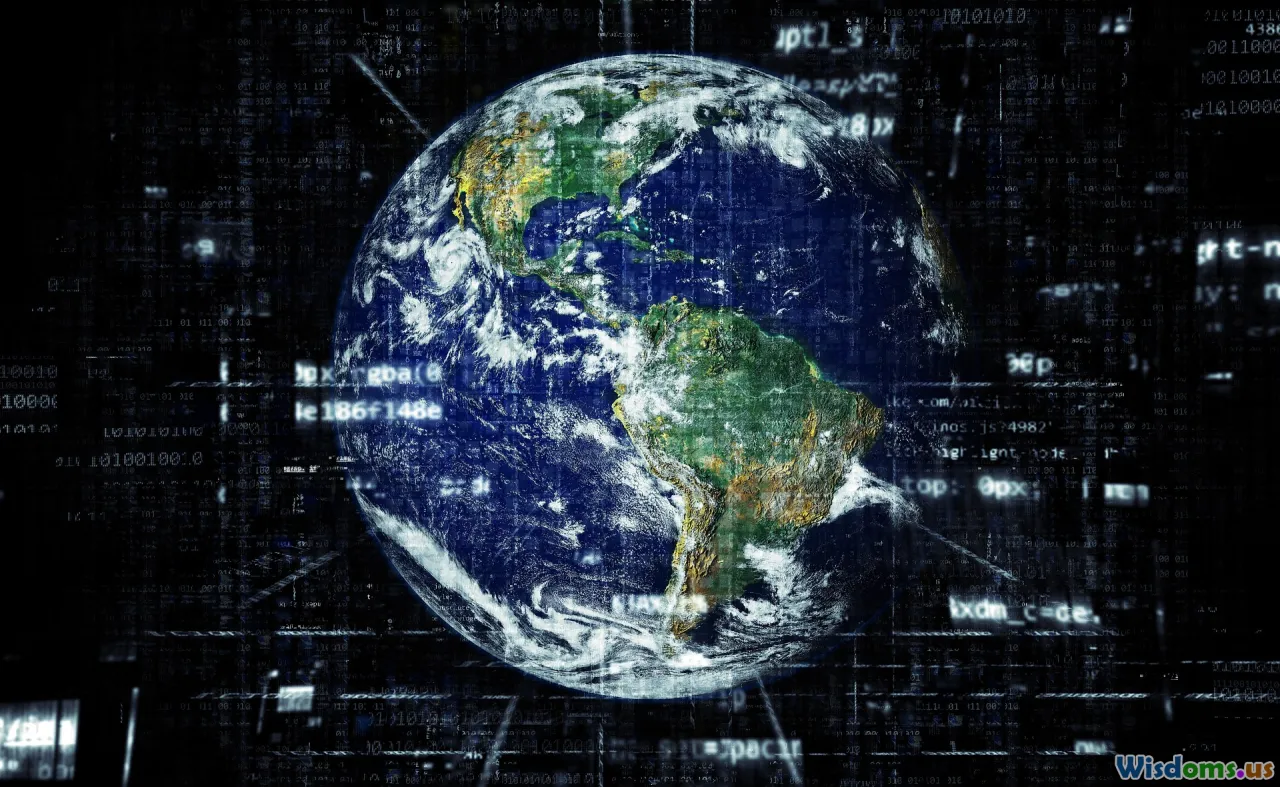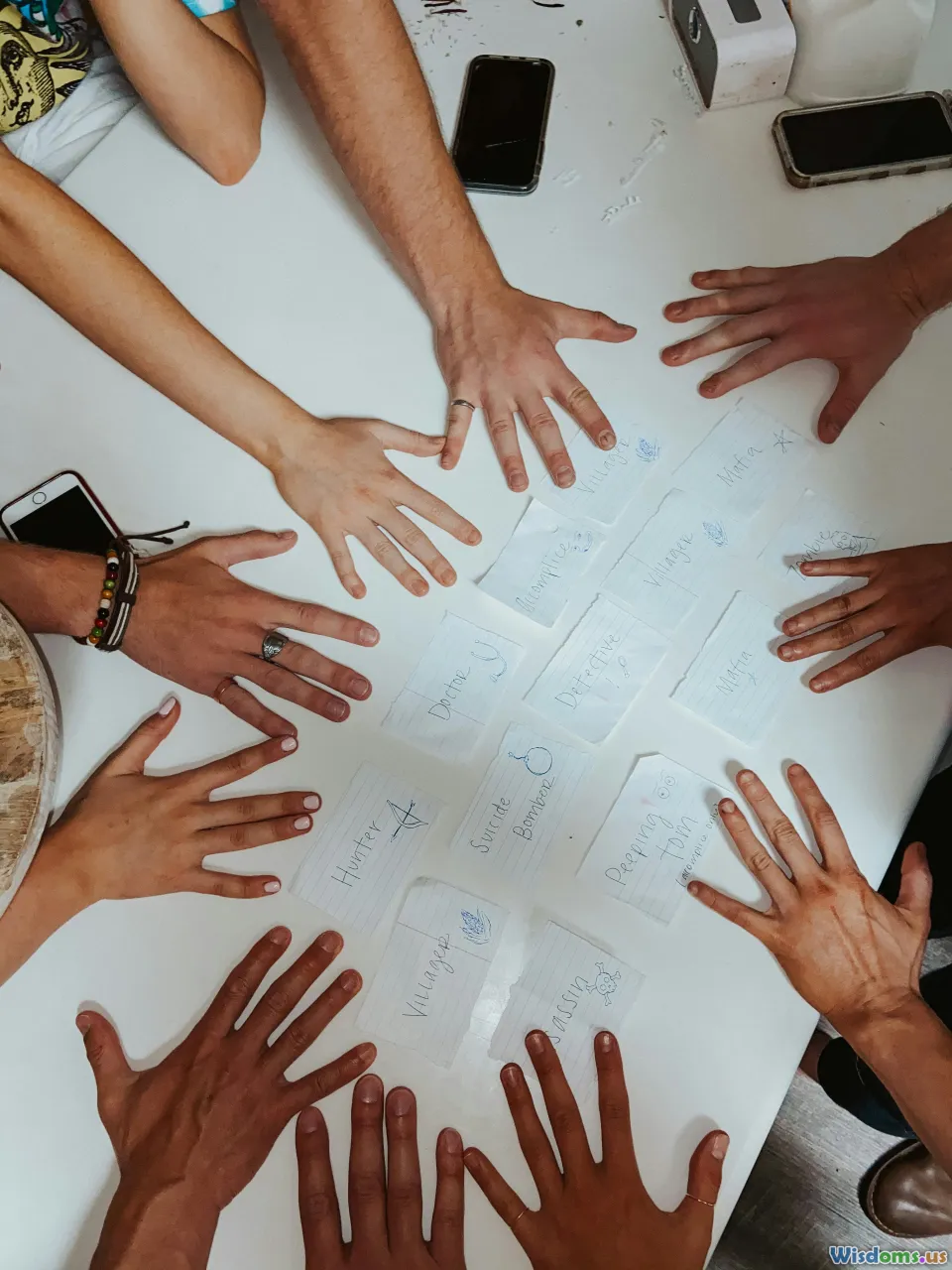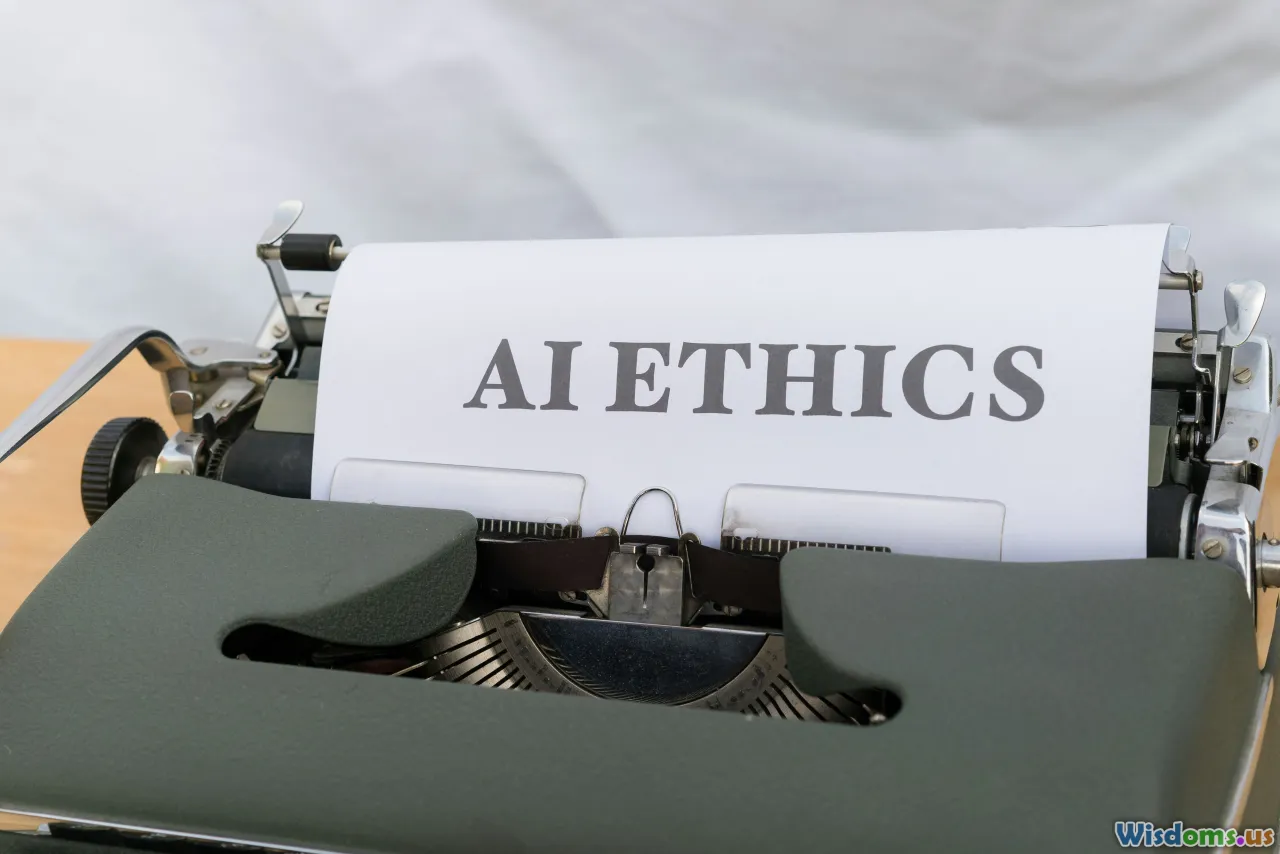
Text Generation Powers Creative Writing AI Tools
15 min read Exploring how text generation AI tools are transforming creative writing for authors, marketers, and storytellers. (0 Reviews)
Text Generation Powers Creative Writing AI Tools
In a world increasingly shaped by artificial intelligence, creative writing stands out as both a timeless art and a vibrant engine of culture and communication. But today, AI is profoundly transforming how stories are told, ideas are sparked, and words are woven. Far from replacing human creativity, cutting-edge text generation models are evolving into indispensable allies for everyone who puts pen to paper—whether novelists, marketers, students, or aspiring poets. Let's explore how the rise of AI-powered creative writing tools is changing the writer's journey, offering both new methods and inspiring innovations.
How Text Generation AI Works Behind the Scenes

At the heart of every creative writing AI tool lies a sophisticated text generation engine—built on neural network architectures such as GPT, BERT, or T5. These architectures, trained on vast corpora of books, articles, and web data, can mimic human-like patterns of language, narrative flow, and even genre-specific conventions.
The Mechanics of Magic
Modern AI systems, particularly transformer-based models, analyze billions of examples during training, internalizing not just vocabulary but also context, idiom, pacing, and style. At runtime, these models generate text by predicting one word after another based on user prompts, adjusting each selection in context to generate coherent, creative responses.
When you enter a prompt (e.g., "Write the opening paragraph for a sci-fi adventure"), the AI instantly generates multiple plausible completions, often echoing themes or structures found in classic and modern literature. This ability gives writers a head start, the equivalent of brainstorming with a panel of genre experts in seconds.
Example in Practice
Consider a romance novelist struggling with an elusive love scene. With a tool like OpenAI's ChatGPT, they can input a scenario—"Describe a first kiss on a rainy Paris evening"—and instantly receive a nuanced, emotionally-charged passage as inspiration. The writer can refine, edit, or use this as a jumping-off point: AI becomes a creative whisperer, not a scriptwriter.
Unlocking Writer's Block: AI as a Creative Companion

One of the most frustrating experiences any writer faces is the dreaded writer's block—the blank screen, the blinking cursor, inspiration with nowhere to go. Here, AI shines as a tireless creative partner, always ready to suggest new directions, phrasing, or plot twists.
Overcoming Artistic Stalling
AI tools, such as Jasper, Sudowrite, or ShortlyAI, excel at overcoming the inertia that often cripples creative projects. These platforms offer features such as autocomplete suggestions, plot generators, and tone-switching controls. If a writer stalls, the AI can propose what happens next, rewrite paragraphs with a different mood, or brainstorm lists of unique character traits. Empirical studies indicate that users frequently report higher satisfaction, faster draft completion, and increased enjoyment of the craft when collaborating with AI-based tools.
Example: For NaNoWriMo (National Novel Writing Month), many participants now use AI-powered suites to maintain daily word counts, experiment with alternative viewpoints, or weave subplots that might otherwise remain unexplored.
Diversity of Input, Diversity of Output
Crucially, AI democratizes inspiration: it doesn't matter if you're a Pulitzer-winning novelist or composing your first short story. AI responds to anyone willing to type a prompt. It can adapt to obscure fantasy settings, mimic Shakespearean verse, or tackle modern dialogue—providing resources traditionally limited to well-staffed creative teams.
Customization and Personal Voice Retention

A common worry surrounding AI creativity tools is the risk of losing authentic author voice or churning out "generic" content. However, today's advanced text generation systems actively counteract this, allowing writers to personalize, finetune, and preserve their unique textual signature.
Tailoring AI to the Writer
Many applications (such as Copy.ai and Writesonic) include customization workflows. Writers can train the system on their existing work by submitting sample documents or designating favored styles. The AI then extrapolates word choice, syntax, pacing, and tone, producing suggested text that aligns closely with the original personality and rhythm.
Case Study: Memoir authors have used AI to revive the speech patterns of deceased family members by importing letters and diary entries. The resulting output, when carefully curated, preserves memories with remarkable fidelity—a compelling fusion of nostalgia and machine learning.
Brand and Tone Consistency
Marketing professionals and brands benefit from these features as well. Teams regularly teach AI tools to generate on-brand content, ensuring every output maintains strict tone, language, and values guidelines. The result is not only scalable content but also unwavering voice continuity regardless of who operates the software.
Crafting Unique Plots and Characters with Generative Models

While writing beautiful prose is one thing, narrative engine tools powered by text generation have begun redefining how writers develop entire story arcs, rich settings, and multidimensional characters.
World-Building with AI Guidance
Tools like ProWritingAid Story Engine, AI Dungeon, and NovelAI enable writers to upload story notes, plot outlines, or worldbuilding wikis. The AI then proposes potential directions for events or character decisions, helping to solve logic gaps or inspire unexpected twists.
How-to Example: Suppose you're crafting a high fantasy novel. Enter character bios and kingdom lore into Story Engine, and prompt, "Suggest a betrayal that could upend the protagonist's plans." The AI might combine mythology, dramatic tension, and historical motifs to generate several plausible scenarios—some subtle, some sensational, all tailored to your universe.
Creating Unexpected Depth
A report by The Verge detailed how fanfiction communities have embraced AI to expand on incomplete stories, or to generate plausible personality traits for minor characters. Likewise, game developers script interactive experiences where each player’s choices prompt real-time narrative generation—blurring the boundaries between writing, gaming, and play.
Collaboration, Co-creation, and Remixed Authorship

Text generation AIs are not merely solitary tools: they facilitate new forms of collaborative creation. The phenomenon known as “co-writing” or “AI-assisted brainstorming” allows authors to iterate with not just a digital partner, but with global creative communities.
AI as Cowriter on Screen and Page
Several landmark novels and scripts have been co-authored by humans and machines, often blending perspectives or rapidly exploring alternative outcomes. In 2016, Japan’s Nikkei Hoshi Shinichi Literary Award notably shortlisted an AI-generated novella, opening a broader conversation around shared authorship.
Online Creativity Platforms
Platforms like Google’s Verse by Verse allow multiple poets (and AIs) to co-create poems in real time, feeding off one another’s ideas. This opens the door to remix culture: users publish story beginnings or concepts online, and others (human or AI) extend or reinterpret them—accelerating literary experimentation on a scale previously impossible.
Example: LitRPG authors often use Discord channels paired with AI bots to create sprawling adventures, rapidly developing narratives as participants make live suggestions and the AI instantly elaborates.
Ethics, Limitations, and Responsible AI Storytelling

Despite the dazzling promise of AI-powered creativity, important questions remain about ethics, authorship, and the boundaries between human and machine.
Navigating the Authenticity Dilemma
Who owns content generated by AI? How much of a co-author should a machine be credited as when it inspires entire plots or passages? Publishers, courts, and literary societies continue to debate these issues. While the U.S. Copyright Office (as of 2024) generally requires "human authorship" for registration, some attorneys recommend writers retain records of how AI prompts and outputs shaped the work.
Limitations of Current Technology
No system is perfect. AI occasionally “hallucinates” improbable facts or creates prose lacking true emotional resonance. Even with customization, resulting text might reflect biases present in training data or miss subtle cultural references. Experts advise treating AI outputs like trusted but fallible drafts to be heavily revised and fact-checked before publication.
Principles for Responsible Use
- Transparency: Disclose when major sections have been AI-assisted, especially in published works.
- Editing: Always review and humanize AI prose, ensuring appropriateness and intent.
- Training Input Vetting: Avoid uploading confidential or sensitive material, as this can be used for AI improvement by the tool provider.
Practical Tips for Integrating AI into Your Writing Process

To maximize the benefits of creative text generation, writers should treat AI as a flexible toolkit—one that can adapt to various needs and phases of the writing process.
Getting Started
- Choose appropriate tools: For brainstorming, use platforms like Sudowrite or Jasper. For editing and drafting, try Grammarly or ProWritingAid with AI enhancements.
- Begin small: Start by requesting prompts, single paragraphs, or outlining suggestions before relying on extensive generation.
- Refine prompts: The more specific and detailed the prompt, the better the output. Iteratively update your instructions.
- Curate outputs: Don't feel compelled to accept every suggestion. Trust your instinct and combine AI drafts with your own preferred words.
Enhancing Workflow Efficiency
- Use AI to generate rough drafts for routine content (e.g., blog posts, newsletters), then spend your energy crafting high-impact passages.
- For longer projects, prompt AI for scene transitions, dialogue snippets, or "what happens next" suggestions, then rewrite for cohesion.
- Employ revision features where AI rewrites sections for clarity or grammar without changing meaning, acting as a first-pass editor.
Continual Learning
AI models are evolving rapidly. Stay up-to-date with new releases, features, plugin integrations, and ethical guidelines by joining online writers’ forums, attending virtual workshops, and subscribing to relevant creative writing newsletters.
The Future: A New Creative Renaissance Shaped by Human and Machine

Text generation AI has already secured its place in the modern literary toolkit. As these systems grow even more sophisticated—understanding subtext, emotional nuance, and cross-genre references—they will inspire a new era of hybrid creativity. Writers can look forward to:
- Hyper-customization: AI partners trained exclusively on individual authors’ libraries.
- Multimodal synthesis: Generators handling not just text, but also images, music, and voice, enabling multimedia storytelling.
- Conversational editing: Co-writing platforms where the writer revises and debates their manuscript with an AI in a natural, real-time conversation.
The challenge (and opportunity) lies in wielding these tools thoughtfully—preserving artistic ambition, fostering storytelling diversity, and ensuring responsible use. With AI amplifying, energizing, and unlocking our imagination, a new chapter in the global story of creativity is only just beginning.
Rate the Post
User Reviews
Popular Posts














